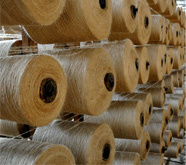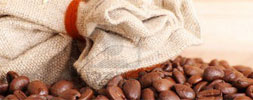
Components of jute
The major jute fibre components are
- Lignin (12-14%)
- Holocellulose (83-87%)
- Wax (0.4-0.8%)
- Ash (0.5-1%)
- Nitrogen (0.2-0.4%)
Features of jute
- Jute fibre is 100% bio-degradable and recyclable hence environmental friendly.
- It is a natural fibre with golden and silky shine and hence called The Golden Fibre.
- It is the cheapest vegetable fibre procured from the bast or skin of the plant's stem.
- It is the second most important vegetable fibre after cotton, in terms of usage, global consumption, production, and availability.
- Jute yarn leaves a fibrous residue which improves the soil structure.
- It has high tensile strength, low extensibility, and ensures better breathability of fabrics. Therefore, it’s suitable in agricultural commodity bulk packaging.
- It helps to make best quality industrial yarn, fabric, net, and sacks. It is one of the most versatile natural fibres that has been used in raw materials for packaging, textiles, non-textile, construction, and agricultural sectors.
- Jute has the ability to be blended with other fibres, both synthetic and natural, and accepts cellulosic dye classes such as natural, basic, vat, sulfur, reactive, and pigment dyes.
- Some noted disadvantages include poor drapability and crease resistance, brittleness, fibre shedding, and yellowing in sunlight.
- Jute has a decreased strength when wet, and also becomes subject to microbial attack in humid climates.
- Jute can be processed with an enzyme in order to reduce some of its brittleness and stiffness. Once treated with an enzyme, jute shows an affinity to readily accept natural dyes, which can be made from marigold flower extract.
Products at a glance

- Jute Hessian Cloth
- Twill Sacking Bags
- Double Warp Bags
- Soil Savers & Ground Covers
- Jute Twine & Yarn
- Jute Webbing
- Jute Bags